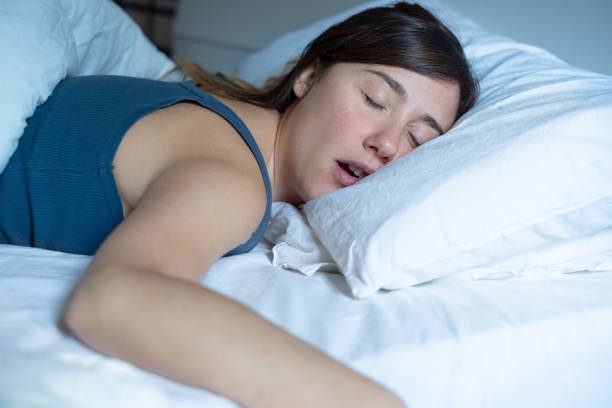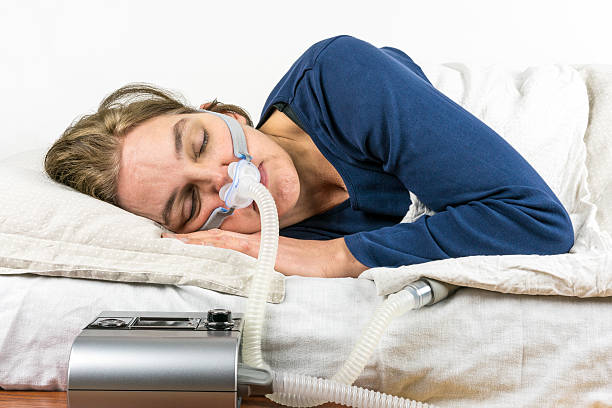Sleep apnea is a condition that doesn’t discriminate by gender, yet its impact on women is often underestimated and overlooked. While it’s widely recognized as a significant health issue, the unique ways it manifests in women can lead to misdiagnosis and inadequate treatment. This article aims to shed light on the importance of acknowledging and effectively managing sleep apnea in women, a key to enhancing their overall health and quality of life.
Understanding Sleep Apnea In Women

Sleep apnea in women often presents differently than in men, leading to challenges in diagnosis and understanding. Women typically experience subtler symptoms, such as fatigue, morning headaches, and mood disturbances, rather than the loud snoring commonly associated with the condition in men. These symptoms can easily be mistaken for stress or other health issues, obscuring the underlying sleep disorder.
Physiological and hormonal factors also play a significant role in how sleep apnea manifests in women. Hormonal changes, particularly during menopause, can exacerbate or trigger sleep apnea. Additionally, the female airway’s structure and the different impacts of obesity between genders contribute to the complexity of diagnosing and treating sleep apnea.
Recognizing these unique presentations is crucial for proper diagnosis and treatment. Understanding that symptoms like unexplained fatigue and mood swings could indicate sleep apnea is a vital step in addressing this often-overlooked health issue in women.
Also Read: How Is Sleep Apnea Different In Men And Women?
Debunking Stereotypes
Due to these stereotypes, women with sleep apnea frequently face misdiagnosis. Their symptoms are often attributed to stress, anxiety, or hormonal issues.
Imagine a woman, let’s call her Sarah, who spends her days juggling work and family, feeling constantly exhausted. She’s told it’s just the stress of her busy life. But the real culprit lies undetected – sleep apnea. Her fatigue isn’t normal; it’s a cry for help that goes unheard.
The impact of these stereotypes is profound. They delay crucial treatment and perpetuate a cycle of misunderstanding and ignorance. It’s time to shatter these misconceptions. Women with sleep apnea are not anomalies; they are among us, struggling for recognition and proper care.
Medical professionals are beginning to acknowledge this gap. Studies are now focusing on the nuances of sleep apnea in women, advocating for gender-specific diagnostic criteria and treatment. This shift is crucial, not just for women’s health but for medical science’s integrity.
In breaking these stereotypes, we do more than just advance medical understanding; we validate the experiences of countless women whose misconceptions have been sidelined. We open doors to effective treatment and, most importantly, extend a hand of empathy to those suffering in the shadows.
Overcoming Barriers and Challenges
Women with sleep apnea often face unique barriers in seeking and receiving effective treatment. These challenges range from social stigmas to practical issues related to CPAP therapy.
Social Stigma And Lack Of Awareness
Many women struggle with the social stigma attached to sleep apnea, which is often perceived as a disorder limited to men. This stigma can lead to reluctance to discuss symptoms with healthcare providers or peers, delaying diagnosis and treatment. Increasing women’s awareness and education about sleep apnea is crucial to overcoming this barrier.
Diagnosis Difficulties
Women’s symptoms of sleep apnea, often different from men’s, can lead to misdiagnosis or underdiagnosis. Healthcare providers must be more attuned to these differences to ensure accurate diagnosis. This includes recognizing symptoms like insomnia, morning headaches, and fatigue as potential indicators of sleep apnea in women.
Lifestyle Adjustments
Women with sleep apnea may need to make lifestyle adjustments to improve treatment outcomes. This includes maintaining a healthy weight, avoiding alcohol before bedtime, and creating a sleep-conducive environment. Such changes, coupled with CPAP therapy, can significantly enhance treatment effectiveness.
Also Read: Enhancing Sleep Quality: CPAP Tips & Lifestyle Changes
The Role Of CPAP Therapy

Women using CPAP therapy often report a marked improvement in sleep quality and reduced sleep apnea symptoms. This improvement in sleep quality can lead to better overall health, reducing risks associated with untreated sleep apnea like heart disease and hypertension.
Adapting to CPAP can be challenging, with issues such as mask fit and machine noise being more pronounced for women. However, advancements in CPAP technology, including masks designed for different facial structures and quieter machines, are helping to address these concerns.
The effectiveness of CPAP in women is supported by research showing that consistent use can alleviate sleep apnea symptoms, leading to better sleep and improved daytime alertness. This makes CPAP an essential tool in treating sleep apnea for women, helping improve their quality of life and overall health.
Final Thoughts
Addressing sleep apnea in women is a vital step towards improving their health and quality of life. With proper awareness and treatment, such as CPAP therapy, women can effectively manage this condition. The key to successful treatment lies in not only understanding sleep apnea but also in ensuring that the therapy is comfortable and tailored to individual needs.
For those undergoing CPAP therapy, the experience can be significantly enhanced with the right accessories. While there are various options available, products like those offered by Resway are known for their quality and user-centric design. Exploring such accessories can be a valuable step in making CPAP therapy more effective and comfortable, leading to better sleep and overall health.




